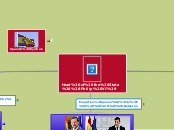af 22-0064 2 7 måneder siden
242
The Treaty and The Irish Civil War

af 22-0064 2 7 måneder siden
242

Mere som dette


af Raquel Marín González


af RC - 10ZZ 686310 Chinguacousy SS


af Ricardo Bragado


af Alexis Hall
internment-jail without trial
Arthur Grifith replaced De Valera.
Which included De Valera, Tom Barry, Cathal brugha and Dan breen
which included Richard Mulcahy, WT Cosgrave and Kevin O'Higgins
They were plenipotentiary